Inn Destruction
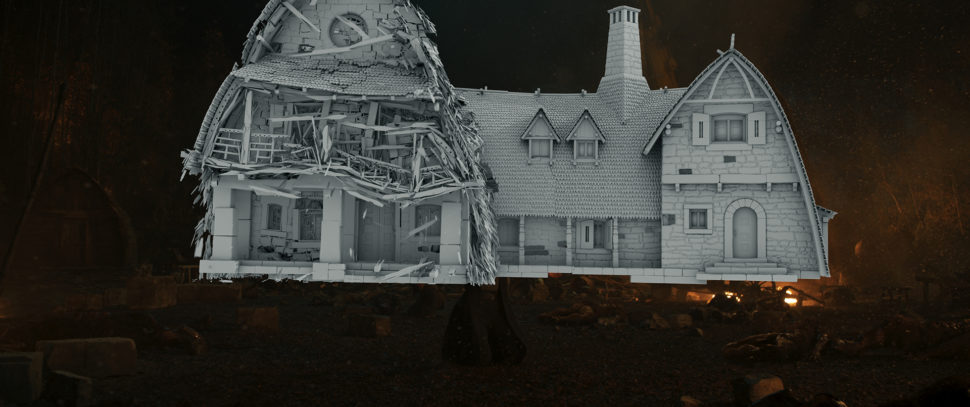
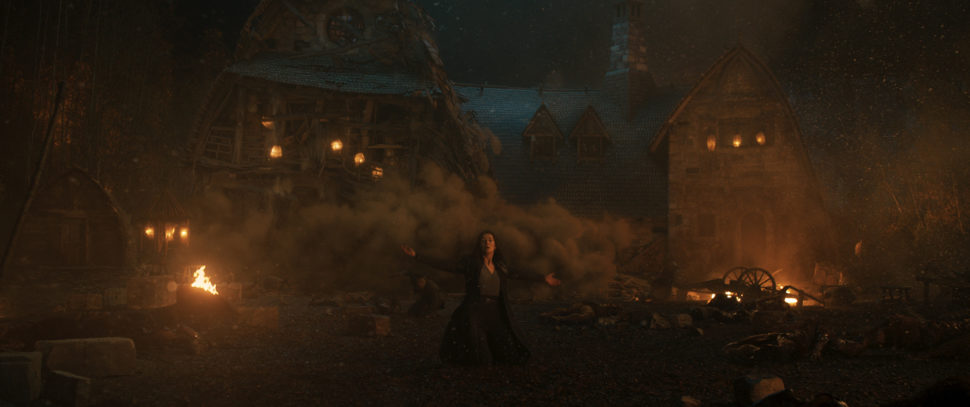
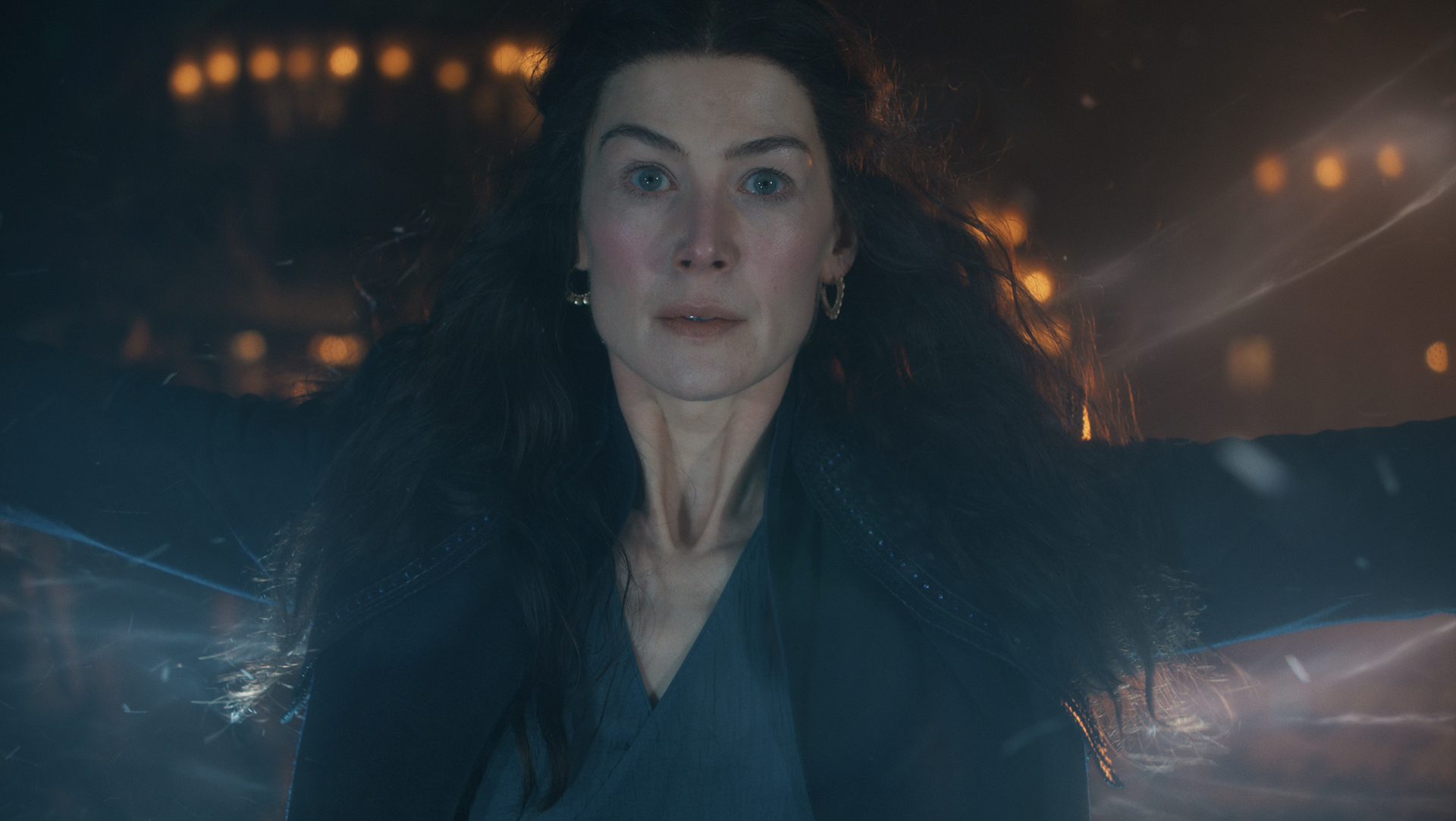
Set in a high fantasy world where magic exists, but only some can access it, The Wheel of Time follows the world-spanning journey of a powerful woman called Moiraine. She is a member of the powerful, all-woman organisation of channelers (magic users) called the Aes Sedai and she leads a group of five young people to find the reincarnation of an ancient hero called the Dragon.
Cinesite delivered over 600 shots for the Amazon Studios’ series, creating visual effects for every episode. The Wheel of Time is adapted from an original series of 14 high fantasy novels by Robert Jordan, the first volume of which was published in 1984.
Cinesite VFX supervisor for the production was Salvador Zalvidea, production VFX supervisor was Julian Parry and VFX producer Jakub Chilczuk.
The channelling effects, or the “One Power”, are the visual heart of the story, showing the energy and driving force of creation flowing through the air. They were generally called “weaves” due to their interlaced stream structure. In the books, the weave has various colours which illustrate its different components, but a creative decision was made in the series to keep it white. A great deal of look development, R&D and testing was carried out to determine the visual language for the bright, interwoven strands of magic.
An early sequence in the first episode, involving a battle between Moiraine and the antagonistic Trolloc creatures, was used to help establish the look. This is an important sequence narratively since it helps establish Moiraine’s power and the different ways it can be used and weaponised. The actress’ movement helped drive the composition and layout of each shot, with the VFX team adjusting the weave’s position in 3D space and determining the speed of energy pulsing through it.
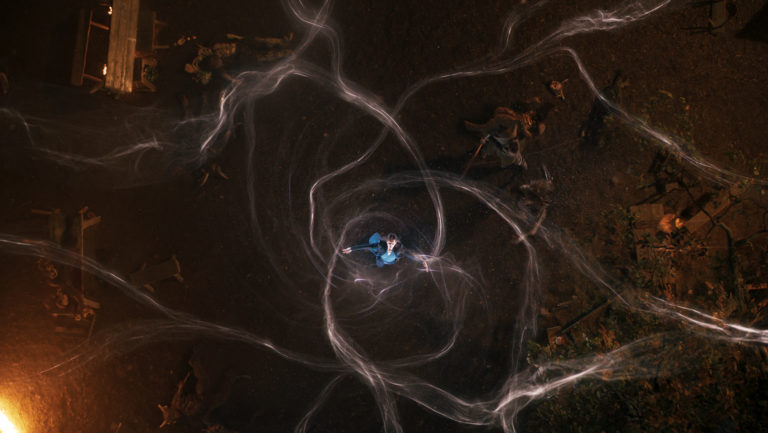 The energy is invisible to the characters and only we, the audience, can see it. For this reason, little interactive lighting was used on set, and where it was, it was often toned down or graded out; it was vitally important for weaves to help tell the story, yet never overpower the plate. The challenge was to make it appear integrated into the plate without adding interactive light. Once the look of the weaves had been established in this early sequence, the same process was used throughout all episodes.
The energy is invisible to the characters and only we, the audience, can see it. For this reason, little interactive lighting was used on set, and where it was, it was often toned down or graded out; it was vitally important for weaves to help tell the story, yet never overpower the plate. The challenge was to make it appear integrated into the plate without adding interactive light. Once the look of the weaves had been established in this early sequence, the same process was used throughout all episodes.
Towards the end of this Trolloc fight, Moiraine uses her powers to weaponise a lintel stone from a nearby inn, which collapses spectacularly upon its removal. The collapse of the inn was created with a full CG simulation, using scans of the set and Houdini for the destruction, blending the practical set and smoke with our full CG version.
In this Trolloch battle and in other battles throughout the series, a fair amount of CG blood and wounding was required, which also included the addition of CG blades, arrows and other weapons, practical explosion enhancements, fire, embers, digi-doubles and even the addition of photorealistic exploding trees.
 Male channelers use a different energy form to the women, called Saidin, which is more difficult to control. Moiraine’s enemy Logain uses this power and in his case, it has become dark and corrupted. This required the creation of a different look for the weave, in sequences where Logain is using his power to control or attack others. The strands of his weave are darker, moving from gaseous to solid, with hints of white energy shining through.
Male channelers use a different energy form to the women, called Saidin, which is more difficult to control. Moiraine’s enemy Logain uses this power and in his case, it has become dark and corrupted. This required the creation of a different look for the weave, in sequences where Logain is using his power to control or attack others. The strands of his weave are darker, moving from gaseous to solid, with hints of white energy shining through.
Throughout the series, Moiraine and other channelers use their One Power to restrain, or “gentle” Logain. The weave is seen in various forms, as a weapon, shield and even as a “healing bomb” which restores health to all who have been injured.
In one sequence, after Moiraine and her companions have fled across a river on a ferry, in order to stop the Trollocs from following, she destroys the craft. A full CG water simulation was used to create a whirlpool in Houdini, in addition to the rotating ferry with ferryman holding on. Reference was taken from real whirlpools to understand the strength of their dynamic currents and also to establish the movement of objects caught within their force.
Towards the end of the series we see The Ways, a horrifying, endless area outside reality; it appears labyrinthine to the group of travellers, with a path held up by pillars stretching down into infinity. Cinesite’s team, led by Salvador, worked from a blank canvas on all aspects of the environment and VFX for the sequence, including creating a 12-minute previsualisation for every shot, both VFX and drama. When planning where the weaves would sit in each shot, the team created comp-cept, where the layout, composition and timing of the energy was added using pre-rendered weaves distorted for the scenes. This allowed the creation of quick iterations and ensured the FX team only started their work once layout had been agreed, matching what had been planned in 2D. This saved time overall since the weaves were fairly heavy renders, composed of millions of particles.
Salvador worked with the production to establish environmental compositions which gave enough variety to suggest the group had been walking for long periods of time and were not always in the same place. Fog and atmospherics were used to help the pillars appear to fade into the distance. Lighting needed to be matched with what had been shot on set, yet enhanced digitally to help convey the enormity, as well as the ominous nature of the environment.
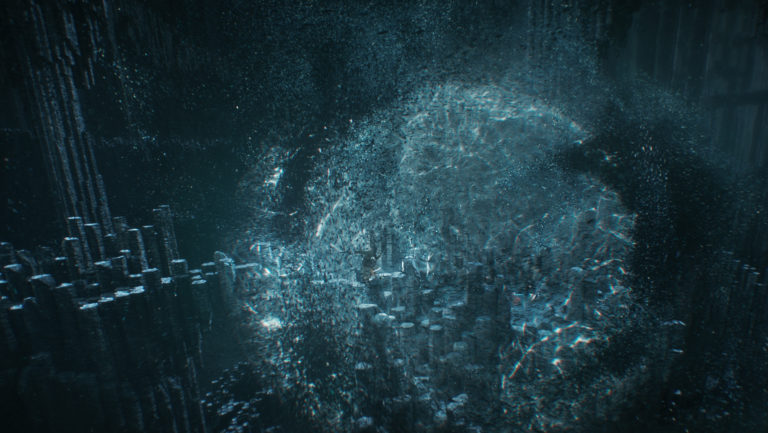 Whilst within The Ways, the travellers are subjected to the Machin Shin, an obscure entity which drains victims’ souls or drives them insane. Various references were used and concepts explored to create the look of the energy force, which appears like a cloud of synchronised flying stones and dark objects, including murmurations of birds. In one of the most arresting shots in the sequence, Nynaeve releases a bright protective shield in front of the Machin Shin, the light from which reflects on the stones beautifully, like a shoal of fish catching the light. The same kind of visual language used to create the healing bomb was used to create the shield.
Whilst within The Ways, the travellers are subjected to the Machin Shin, an obscure entity which drains victims’ souls or drives them insane. Various references were used and concepts explored to create the look of the energy force, which appears like a cloud of synchronised flying stones and dark objects, including murmurations of birds. In one of the most arresting shots in the sequence, Nynaeve releases a bright protective shield in front of the Machin Shin, the light from which reflects on the stones beautifully, like a shoal of fish catching the light. The same kind of visual language used to create the healing bomb was used to create the shield.
You can read more about the VFX in The Wheel of Time in this Art of VFX interview with production VFX Supervisor Julian Parry.